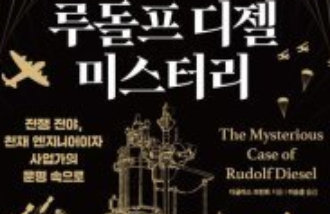Ways to become ‘judiciary for all,’ not progressive vs conservative
Ways to become ‘judiciary for all,’ not progressive vs conservative
Posted June. 25, 2024 07:59,
Updated June. 25, 2024 07:59
When Chief Justice of the Supreme Court Cho Hee-dae was asked during an interview with The Dong-A Ilbo what he would do if six votes were cast to each side before he voted, he said, “I would try to avoid the situation.” The Supreme Court en banc is the highest ruling body of the highest court, consisting of 13 members, including justices of the Supreme Court and the chief justice of the Supreme Court who serves as the presiding judge. In the past, some judgments were made by a difference of just one vote – seven vs six – in which case the deciding vote cast by the chief justice became scandalous.
“What’s once said is not an unchanging truth. We should try to reach a better conclusion by thinking over it again,” reassured the chief justice. “I’ve changed my stance before as a justice of the Supreme Court. It is not something to be embarrassed about. It is part of the process to reach a desirable outcome for people.” Chief Justice Cho also emphasized ‘intellectual modesty,’ a quality that U.S. Chief Justice John Roberts has identified as the first common characteristic among outstanding justices. Cho's message is clear-it is crucial to reflect on one’s thinking, acknowledging that one's own thoughts are not always right, and to find solutions through discussions with colleagues.
Such comments made by Cho are not surprising. When he was appointed as a Supreme Court justice 10 years ago, he said thoughts don’t have boundaries, such as the air and eyes do not distinguish left and right. During his time as a Supreme Court justice, he made several difficult decisions that are hard to categorize as neither progressive nor conservative. He even said no justice made as many progressive judgments as he did when he asked about his conservatism during his confirmation hearing for the chief justice position of the Supreme Court. After he was nominated as a chief justice of the Supreme Court, he mentioned an idiom, ‘Moo-yoo-jeong-beob (無有定法),’ which means an undefined law is the true law. He emphasized that he has always tried to walk in the middle without leaning towards either side while he has served as a judge.
The influence and impact of cases where previous judgments are overturned or the en banc makes judgments on social issues with high public interest is very large. However, some rulings made by the en banc sometimes revealed conflicts without any filter, amplifying the conflicts rather than serving as a process to find solutions for society’s political and ideological disagreements. A case in point is the Supreme Court’s ruling on a restriction imposed on the Korea Communications Commission for its documentary, “100 Years of War,” when the previous chief justice was in office. While the first and second trials both judged that the sanction was appropriate, the Supreme Court overturned the lower courts' decisions with seven and six votes cast to each side. The statements made by majority and opposition justices included emotionally-charged words to each other, and the chief justice was criticized for siding with half of the justices. It is a lesson that should not be repeated.
Chief Justice Cho firmly stated that the top priority criteria for the nomination of Supreme Court justices is their capabilities. This belief is rooted in the understanding that capabilities are the first tool to protect human rights, for example, preventing an innocent person from serving time in a murder case. While the diversification of the Supreme Court’s composition is necessary, it should not be the goal in itself. Diversification is useless unless justices can make judgments that understand new changes of our time, revise old practices, and protect people’s basic rights.
As society becomes polarized, the ‘judicialization of every issue in the world’ is becoming more widespread. In such times, the Supreme Court should not have a boundary between the progressive and the conservative. The judiciary will be able to build trust by making consistent judgments that carefully examine what’s right and what’s wrong after intense debates. The en banc of justices led by Cho, who made its first ruling last month, should be the judiciary for all, not just a half.







